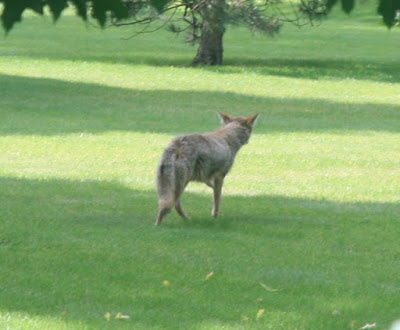July: Preparation for the Nebraska Star Part consumed most of this month, aided by the poor weather we had.
Nebraska Star Party. The less said about this the better. By that I mean the nightly weather was terrible--The presentations and people were a good as always. Of my four nights there, only one was decent, and it was on the night I arrived. The clouds didn't clear out until about 11:30 or so, and by then I was too tired to handle the requirements of imaging.The next three nights were all lost to clouds.
And yes, for the third consecutive year, I did not win a door prize.
Labor Day: The next new moon brought better luck at the Northern Nights Star Fest, a star party sponsored by the Minnesota Astronomical Society. Three nights, each of which was good for imaging until around midnight or so. The first two nights came with very nice auroral displays, too.
More globulars imaged toward the AL program certificate, and one pretty picture that would have been a lot prettier had it not clouded over at a too-early 11:30.
 |
| Pacman nebula, NGC 281. |
Part 2: With the globular list done, I tried for another pretty picture and made an unpleasant discovery. Here's the picture.
 |
| Pelican Nebula, IC 5067/5070 |
Part 3: This is tomorrow night with the moon at first quarter. Given how far south the moon is it won't be a big factor; it sets early, too. I'm either going to try a piggyback image using a camera lens on the DSLR, or a pretty picture at the 432mm FL of my AT65EDQ.
----------------------------------------------
Politics now, with one month remaining before the Presidential election. If you don't like dealing with political opinion, stop reading here.
It's sad to say, but the Republican Party has made itself into a laughing stock almost as comical as its so-called leader, Donald Trump.
Trump is:
- A bigot
- A misogynist
- A serial sexual offender
- A narcissist
- An adolescent boy in an old man's body
The more reprehensible lapse comes from Paul Ryan and Mitch McConnell, two men who have substituted avarice for patriotism. Both have played politics and fiercely guarded their majorities in congress instead of speaking out meaningfully against the party's beyond-lamentable candidate. Yes, both have slapped Donald's wrists, but they're still 100% behind their guy anyway. Their appeasement has set the stage for the destruction of their party.
One wonders if the reason that so many Republicans are at this late date finally renouncing their support for Trump is not the litany of crude remarks and despicable behavior toward women finally coming to light, but instead the growing realization that the ship is sinking and they're about to be caught in an undertow that may well last a generation.
Anything is possible and Trump may yet win the presidency. Win or lose, the GOP is now a shell party run by amoral empty suits interested only in maintaining the status quo. The party of "No" has turned itself into the party of "None."




























